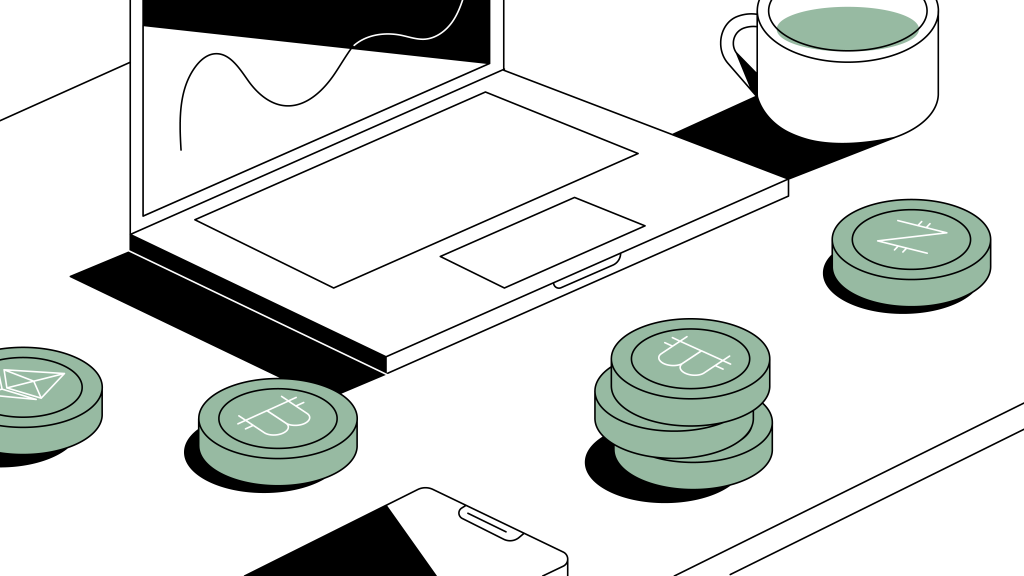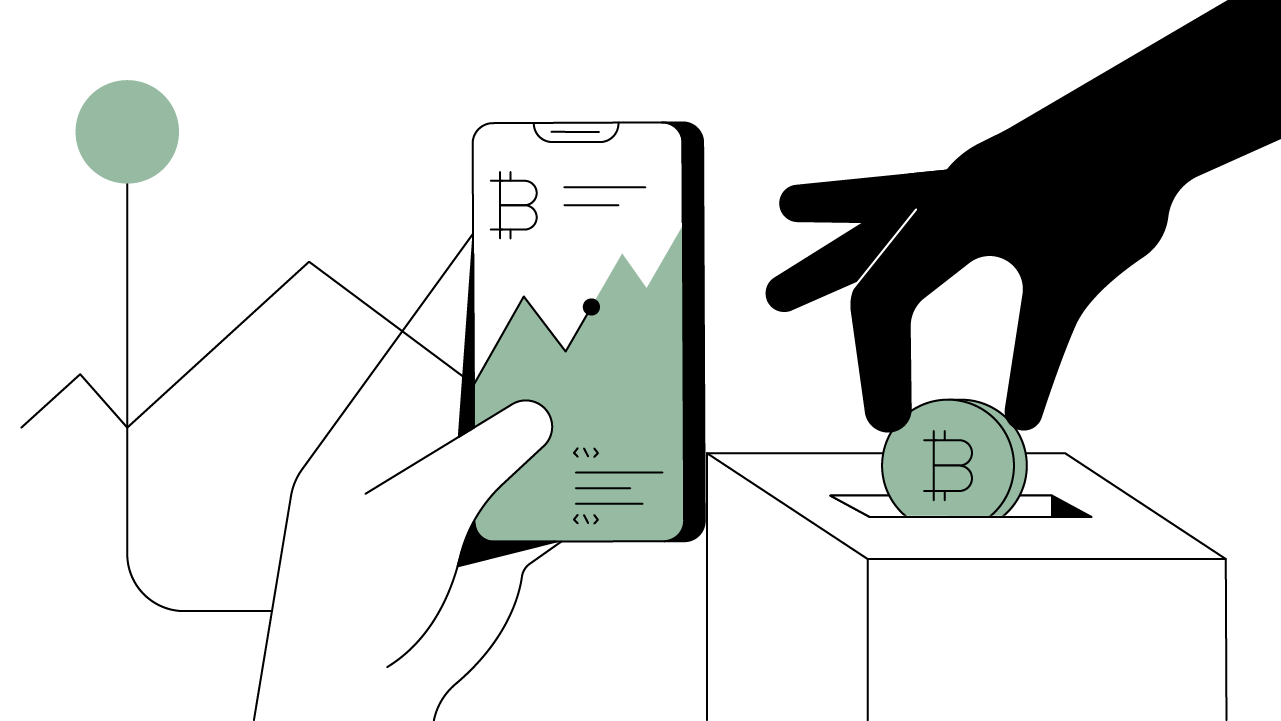Buying and Selling Cryptocurrencies
Crypto exchanges are the most popular platforms for buying and selling digital assets, but there are other avenues, too.
Updated June 28, 2022 • 3 min read

Summary
As the ecosystem for digital assets has matured, the process of buying and selling cryptocurrencies has become increasingly user-friendly. Trading crypto is fairly similar to trading equities and other asset classes, with two major differences: trading platforms and crypto storage.
Places to Buy and Sell Cryptocurrencies
Cryptocurrency Exchanges: Crypto trading exchanges are the most popular platforms for buying and selling digital assets. To open an account at an exchange, you usually need to provide valid identification and link your bank account to your trading account. When you buy cryptocurrency on an exchange, it is stored in an exchange-hosted wallet where, typically, the exchange controls your private keys. However, you may withdraw your crypto investment by using your exchange-hosted private keys. In addition to being a custodial wallet, where the exchange controls your private keys, an exchange wallet is almost always a “hot” wallet — a wallet that is constantly connected to the internet. While hot wallets typically facilitate faster trades, they may be more vulnerable to hackers because they’re always online. Conversely, a “cold wallet” remains offline and much more secure against hacking, but transferring funds into and out of cold storage takes more time and effort. Most reputable exchanges store the majority of customer funds in cold hardware wallets, ensuring that a majority of funds are held securely offline.
Mobile Apps: Several popular mobile apps bundle crypto trading services along with other services. For example the trading app Robinhood offers traditional stock trading in addition to crypto trading; PayPal is a money transfer service that allows users to buy and sell crypto on its platform; and Square is a point-of-sale (POS) system for small businesses, but users can also trade crypto on its app.
Crypto ATMs: Crypto ATMs are physical locations where you can withdraw crypto by using a crypto credit card or purchase it by depositing fiat currency. Not all of these ATMs support selling crypto, however. Crypto ATMs connect directly to a wallet or a cryptocurrency exchange at the back end and have daily limits on cryptocurrency purchases.
In-Person Meetups: Following Bitcoin's launch in 2009, in-person meetups were the most popular method for crypto trading. A number of online platforms, such as one called LocalCryptos, still function as intermediaries to connect crypto enthusiasts and traders with each other. However, the growth of cryptocurrency exchanges, and growing regulations of digital assets, has diminished the popularity of this method.
Futures Exchanges: Futures are an indirect method of buying or selling cryptocurrencies. With futures, you bet on what you think an asset’s price will be on a specific date in the future, usually with a predetermined amount of leverage that is typically between 2x and 150x. Crypto futures culminate in the digital delivery of the cryptocurrency at the end of the trading period, giving the investor either a profit or loss depending on the outcome of their bet.
How to Buy and Sell Cryptocurrency
The first step is to choose a platform and create an account for cryptocurrency trading. Depending on the platform, you may or may not need private and public keys to conduct a trade. For example, you do not need keys to buy and sell crypto on cryptocurrency exchanges — they abstract access by giving you a username and password and hold your crypto (i.e., your keys) as custodians unless you decide to withdraw your crypto to a personal wallet. At that point, they deliver your keys to you. Buying or selling crypto from an independent wallet requires both public and private keys to complete the transaction.
The actual method of buying or selling crypto has greatly simplified over the years and depends on the processes in use at a specific platform. Most cryptocurrency exchanges follow procedures similar to legacy trading platforms. Therefore, the first step is to transfer or deposit money into your trading account. Then, you can initiate a trade by entering the type and quantity of assets you want to buy or sell.
A Word About Fees
A trading platform’s fees vary based on the exchange. Some exchanges have a variable fee structure depending on the quantity of assets you purchase. Other exchanges charge a service fee plus another fee that’s determined by the volatility of an asset’s price across U.S. crypto exchanges. And there’s a transaction fee that’s based on the number of transactions being handled on the blockchain at the time of your trade. The more transactions pending on a blockchain, the higher the fees. For example, during bitcoin’s meteoric rise in price in 2017, bitcoin transaction fees skyrocketed to hundreds of dollars, then dwindled to single digits in the following year.
Cryptopedia does not guarantee the reliability of the Site content and shall not be held liable for any errors, omissions, or inaccuracies. The opinions and views expressed in any Cryptopedia article are solely those of the author(s) and do not reflect the opinions of Gemini or its management. The information provided on the Site is for informational purposes only, and it does not constitute an endorsement of any of the products and services discussed or investment, financial, or trading advice. A qualified professional should be consulted prior to making financial decisions. Please visit our Cryptopedia Site Policy to learn more.

Is this article helpful?


